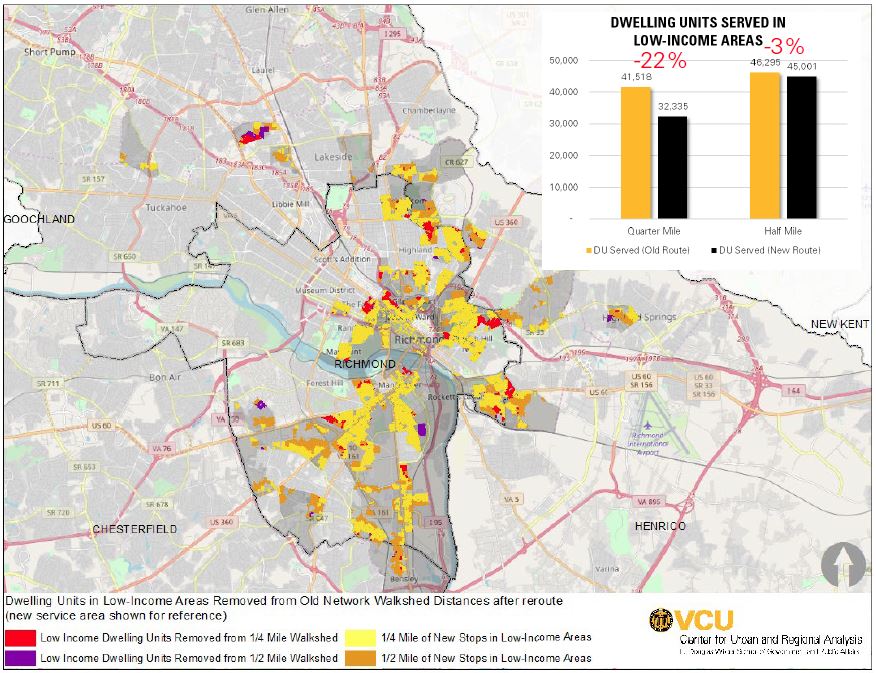Housing and Connectivity in the Richmond Region
The Richmond (VA) region has experienced a shift in demographic trends since 2000. The region's urban center has attracted higher-income households, led largely by educated, white households. Simultaneously, the region's first- and second-ring suburbs have seen growth in poverty and cost-burdened households. These trends threaten existing affordable units, but they also present opportunities for affordable housing creation. As a result of reduced affordability, the families earning modest wages have been pushed further away from the regions employment centers. The mismatch between the location of jobs and housing has a significant impact on the efficiency and quality of life within the region.A well-planned region strives to be a “community of short distances.” A wide range of housing choices located close to employment centers could shorten commuting distances and substantially reduce government outlays for transportation facilities, reduce household transportation expenses, and increase the feasibility of pedestrian movement. This section highlights some of CURA's ongoing works around these pressing issue.
Impact of the GRTC 2018 Reroute on Richmond's Disadvantaged Population

Jobs and Affordable Housing (Im)balance in Richmond Region

CURA also analyzed trends in property values, sales values, and crime rates where affordable housing has been developed. CURA’s Metro View data system is uniquely suited to this task because it is not limited to data published at the jurisdiction or census-tract level. Rather, it constructs neighborhoods, districts & employment centers from the parcel level upwards, following the true geographies of how we actually live & work – across jurisdictional lines.
CURA found spatial patterns of jobs and housing imbalance and access disparities throughout the region, but particularly within the central city and surrounding suburbs. CURA’s analysis of the impact areas surrounding six lower-priced housing developments indicates that the construction of those developments had no apparent negative impact on crime rates, average assessed home values, and average home sales values in surrounding neighborhoods.